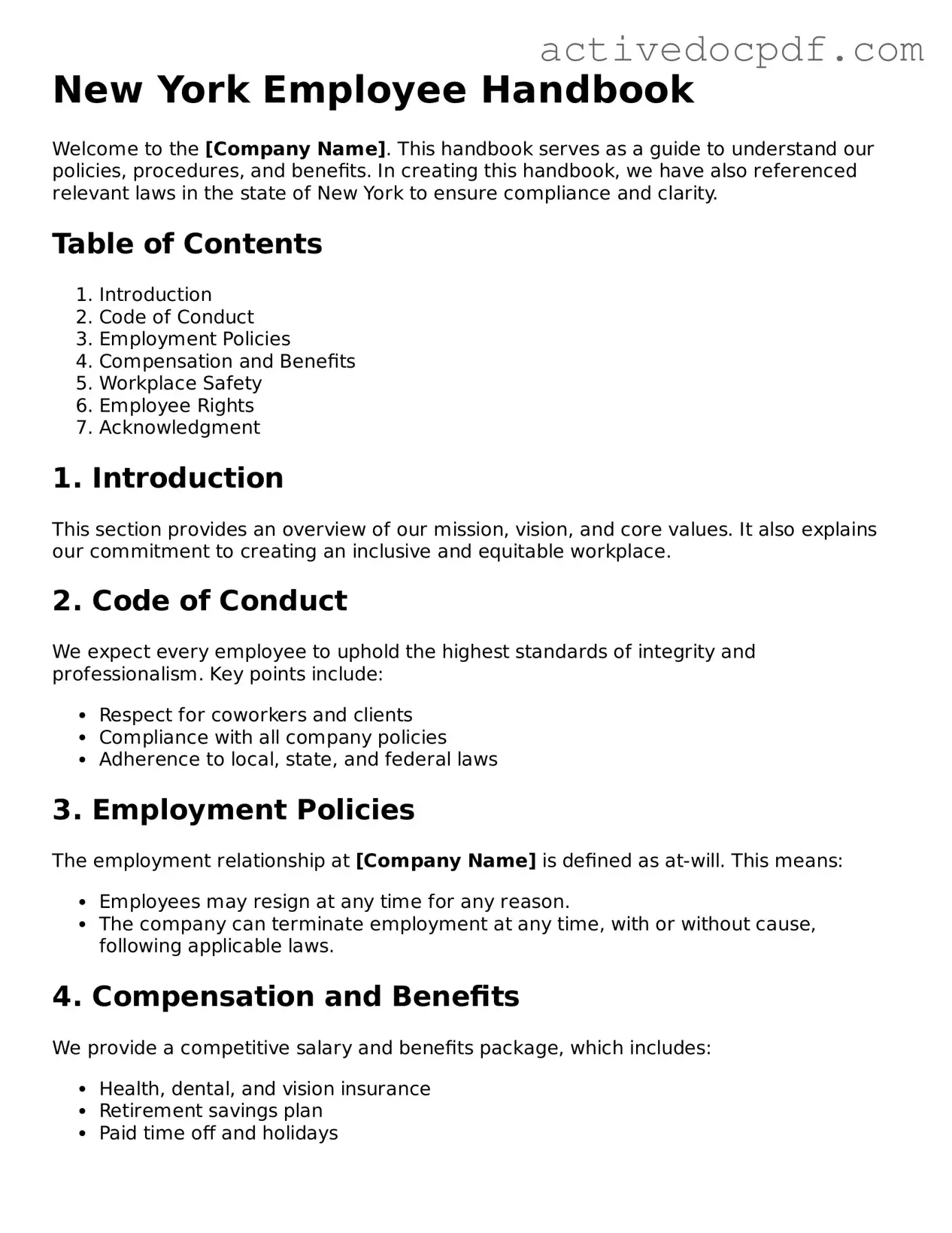The New York Employee Handbook form is a document that outlines the policies, procedures, and expectations for employees within a company. It serves as a guide to help employees understand their rights and responsibilities while working in New York.
Why is an Employee Handbook important?
An Employee Handbook is crucial for several reasons:
-
It sets clear expectations for behavior and performance.
-
It helps ensure compliance with state and federal laws.
-
It provides a reference for employees regarding company policies.
-
It can protect the company legally by documenting policies.
Who should receive a copy of the Employee Handbook?
All employees should receive a copy of the Employee Handbook. This includes full-time, part-time, and temporary employees. It is also advisable to provide a copy to new hires during the onboarding process.
How often should the Employee Handbook be updated?
The Employee Handbook should be reviewed and updated regularly, ideally at least once a year. Changes in laws, company policies, or organizational structure may necessitate updates at any time. Keeping the handbook current helps maintain compliance and clarity.
What topics should be included in the Employee Handbook?
Common topics to include are:
-
Company mission and values
-
Employment policies (e.g., hiring, termination)
-
Workplace conduct and behavior expectations
-
Compensation and benefits information
-
Leave policies (e.g., vacation, sick leave)
-
Health and safety guidelines
-
Anti-discrimination and harassment policies
-
Disciplinary procedures
Can the Employee Handbook be used in legal disputes?
Yes, an Employee Handbook can be used in legal disputes. If a dispute arises regarding company policies or employee conduct, the handbook can serve as a reference point. However, it is essential that the handbook is clear, consistent, and legally compliant to be effective in such situations.
Is it necessary to have an attorney review the Employee Handbook?
While it is not legally required, having an attorney review the Employee Handbook is highly recommended. An attorney can help ensure that the handbook complies with current laws and regulations, reducing the risk of legal issues in the future.
How should employees acknowledge receipt of the Employee Handbook?
Employees should sign an acknowledgment form confirming they have received and understood the Employee Handbook. This form should be kept on file to provide proof of receipt and understanding, which can be important in case of disputes.
